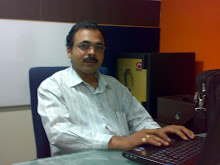Theyyam’ performers belongs to the Hindu communities, the indigenous tribal society (Mostly from the cast of Malayan, Vannan, Velan (Thuzhuvelan), Mavilan, Chingatthan, Panan, Parayan, Pampatharavan, anhuttan, Munnuttan etc.) This is unique, since only in Kerala, do both the upper-caste Brahmins and lower-caste tribes share an important position in a major form of worship. The term Theyyam is a corrupt form of Daivam (means God). People of these particular area (Kannur & Kasaragode districts in Kerala, India) considering Theyyam as God and they seek blessings from this Theyyam. A similar custom is followed in the Tulunadu region of neighboring Karnataka state known as Bhuta Kola. "There can be no doubt", say Bridget and Raymond Alchin, "that a very large part of this modern folk religion is extremely ancient and contains traits which originated ruing the earliest periods of Neolithic, Chalcolithic settlement and expression" (The Birth of Indian Civilization 1968 p. 3039, and indeed, Theyyam is representative of a form of Hinduism)
The Theyyam was not a profession in older times. The artist's shrine rights are always inherited from the mother's family and when he marries, he also acquires the shrine rights of his wife's family. The artistes share a common training and tradition in which the process of becoming the deity is achieved after intense mental, physical and spiritual preparation.
Theyyam is also known as ‘Kaliyattam’ at some places. Kaliyattom means the periodical performance of a group of Theyyam in a particular ‘Tharavadu’ or temple or ‘a sacred dance performance for goddess Kali. Some believe that Kaliyattom is sometimes called Theyyattom because every ‘Thira’ or village was duly bound to perform it. There are two stages in theyyattom: Thottam the preliminary ritual and Theyyam. Some theyyams also has another stage called Vellattam. The myth of the deity is recited by thottam, through songs accompanied by an orchestra. Theyyam is the second stage.
Normally the Theyyam season is in February to May months of every year. Now a days, Theyyam is accepted as one of the competitive art in the world. Some people are still worshiping, some are taking it as livelihood and most of the people are seeing a good art in it.
VELLATTAM PHOTOS (by Avtar.N.Poduval):
















































© 2010

No comments:
Post a Comment